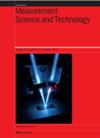基于带接收器时钟估计的历元差分模型的 BDS-3 时频传输性能改进
IF 3.4
3区 工程技术
Q1 ENGINEERING, MULTIDISCIPLINARY
引用次数: 0
摘要
基于北斗全球卫星导航系统(BDS-3)的载波相位(CP)技术已被证明是远程时间和频率传输的重要空间工具。目前的载波相位技术将接收机时钟偏移建模为白噪声随机过程,容易吸收一些未建模的误差,从而影响时间和频率传输性能。为了进一步提高时间和频率传输性能,本文提出了一种基于纪元差分(ED)模型的新型 BDS-3 接收机时钟估计算法,并讨论了其数学原理和应用模式。该算法充分利用了对当前纪元的观测和接收机时钟偏移的实际变化,进一步提高了时间和频率传输的性能。利用五个配备了不同类型接收机和天线的 MGEX 网络站,使用双频 BDS-3 信号建立了四条时传链路(即 AMC4-PTBB、BRUX-PTBB、OP71-PTBB 和 WTZS-PTBB),以评估其有效性。就噪声水平而言,ED 模型改善了所有四个时间链路,与非 ED 模型的结果相比,AMC4-PTBB、BRUX-PTBB、OP71-PTBB 和 WTZS-PTBB 分别改善了 17.0%、18.3%、20.3% 和 5.9%。当平均时间(tau)小于 1000 秒时,AMC4-PTBB 的平均改进率为 8.1%,BRUX-PTBB 为 16.1%,OP71-PTBB 为 10.0%,WTZS-PTBB 为 18.6%。本文章由计算机程序翻译,如有差异,请以英文原文为准。
Improved performance of BDS-3 time and frequency transfer based on an epoch differenced model with receiver clock estimation
The carrier-phase (CP) technique based on the BeiDou global satellite navigation system (BDS-3) has proven to be an important spatial tool for remote time and frequency transfer. The current CP technique models the receiver clock offset as a white noise stochastic process, and easily absorbs some unmodeled errors, which compromises time and frequency transfer performance. To further improve the performance of time and frequency transfer, a new BDS-3 receiver clock estimation algorithm based on the epoch-difference (ED) model is presented, and the mathematical principle and applied mode are discussed. The algorithm makes full use of both observation of current epoch and practical variation of receiver clock offset, further improving the performance of time and frequency transfer. Five MGEX network stations equipped with various types of receivers and antennas with dual-frequency BDS-3 signals were used to establish four time transfer links (i.e., AMC4–PTBB, BRUX–PTBB, OP71–PTBB, and WTZS–PTBB) to evaluate their effectiveness. The ED model improved all four time links in terms of noise level, with improvements of 17.0%, 18.3%, 20.3%, and 5.9% for AMC4–PTBB, BRUX–PTBB, OP71–PTBB, and WTZS–PTBB, respectively, when compared with the results from a non-ED model. ED model outputs were better than raw solutions in terms of frequency stability at all time links, particularly for average time intervals (tau) < 1,000 s. The mean improvement was 8.1% for AMC4–PTBB, 16.1% for BRUX–PTBB, 10.0% for OP71–PTBB, and 18.6% for WTZS–PTBB when the average time (tau) was less than 1,000 s.
求助全文
通过发布文献求助,成功后即可免费获取论文全文。
去求助
来源期刊

Measurement Science and Technology
工程技术-工程:综合
CiteScore
4.30
自引率
16.70%
发文量
656
审稿时长
4.9 months
期刊介绍:
Measurement Science and Technology publishes articles on new measurement techniques and associated instrumentation. Papers that describe experiments must represent an advance in measurement science or measurement technique rather than the application of established experimental technique. Bearing in mind the multidisciplinary nature of the journal, authors must provide an introduction to their work that makes clear the novelty, significance, broader relevance of their work in a measurement context and relevance to the readership of Measurement Science and Technology. All submitted articles should contain consideration of the uncertainty, precision and/or accuracy of the measurements presented.
Subject coverage includes the theory, practice and application of measurement in physics, chemistry, engineering and the environmental and life sciences from inception to commercial exploitation. Publications in the journal should emphasize the novelty of reported methods, characterize them and demonstrate their performance using examples or applications.
 求助内容:
求助内容: 应助结果提醒方式:
应助结果提醒方式:


